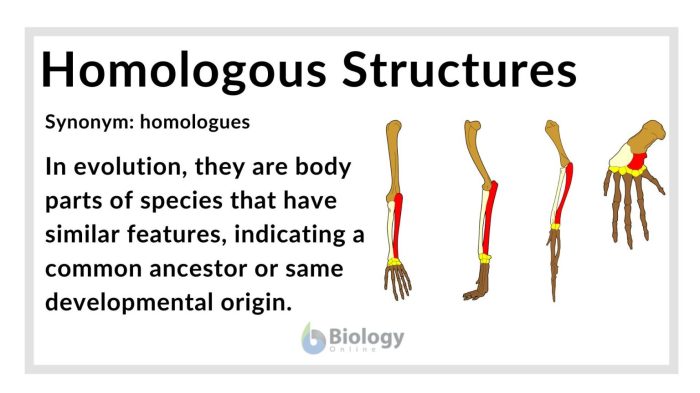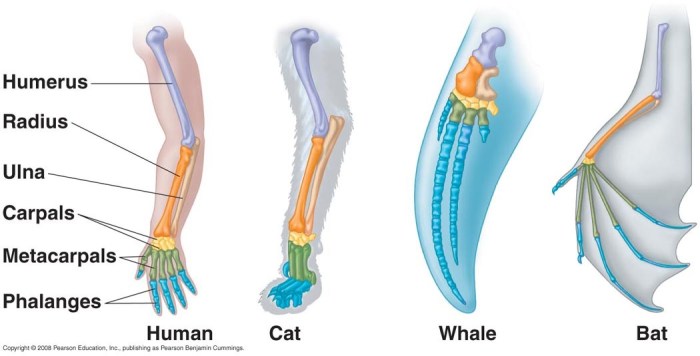Which of the following statements about vestigial structures is accurate? This question delves into the fascinating realm of evolutionary biology, where remnants of our ancestral past continue to captivate scientists and inspire wonder. Vestigial structures, like echoes from a bygone era, provide valuable insights into the intricate tapestry of life’s history.
These enigmatic structures, once essential for survival, have gradually lost their original functions over time, becoming relics of our evolutionary journey. Understanding their significance helps us piece together the puzzle of our origins and appreciate the remarkable diversity of life on Earth.
Vestigial Structures: Definition and Characteristics

Vestigial structures are anatomical features that have lost their original function over the course of evolution. They are remnants of structures that were once functional in the ancestors of the organism, but have become unnecessary or even detrimental in the present environment.
Examples of vestigial structures include the human tailbone, the wings of flightless birds, and the hind legs of whales.
Statements about Vestigial Structures
- Vestigial structures are always completely useless.
- Vestigial structures are only found in humans.
- Vestigial structures provide evidence for evolution.
The first statement is not accurate. While many vestigial structures have no apparent function, some have been found to serve new functions in their current context. For example, the human tailbone is now thought to play a role in supporting the pelvic floor muscles.
The second statement is also not accurate. Vestigial structures are found in a wide variety of organisms, from humans to animals to plants.
The third statement is accurate. Vestigial structures provide evidence for evolution because they are homologous to structures that are functional in other organisms. This suggests that these structures were once functional in the ancestors of the organism, but have since lost their function.
Functions and Roles of Vestigial Structures
While vestigial structures may not serve their original function, they may still have other roles to play in the organism. For example, some vestigial structures may provide structural support, while others may be involved in the production of hormones or other chemicals.
Additionally, vestigial structures may have played a role in the past that is no longer necessary in the present environment. For example, the hind legs of whales are thought to be a remnant of their terrestrial ancestors.
Comparative Analysis of Vestigial Structures, Which of the following statements about vestigial structures is accurate
| Species | Vestigial Structure | Anatomical Location | Evolutionary History | Potential Functions |
|---|---|---|---|---|
| Humans | Tailbone | Pelvis | Remnant of a tail | Supports pelvic floor muscles |
| Flightless birds | Wings | Shoulders | Remnant of wings used for flight | Balance, courtship displays |
| Whales | Hind legs | Pelvis | Remnant of terrestrial ancestors | None |
Question Bank: Which Of The Following Statements About Vestigial Structures Is Accurate
What are vestigial structures?
Vestigial structures are anatomical features that have lost their original function over time due to evolutionary changes.
Why are vestigial structures important?
Vestigial structures provide valuable insights into the evolutionary history of organisms, supporting the theory of common descent.
Do vestigial structures serve any purpose?
While vestigial structures may not have an apparent function today, they may have played a role in the past or may still have subtle functions that are yet to be discovered.


